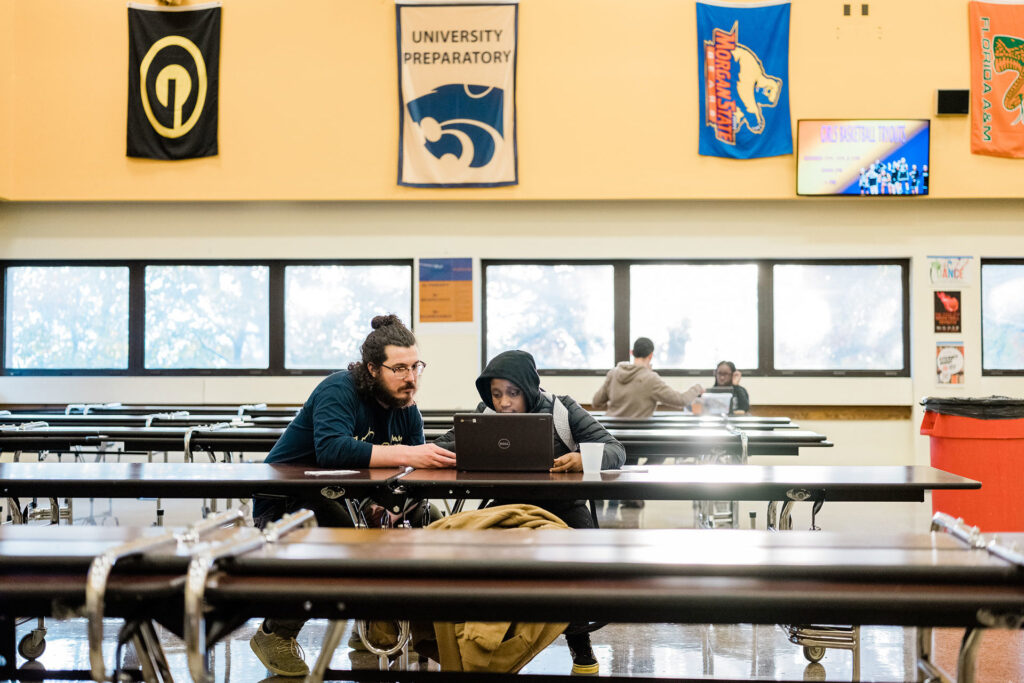School may be over for the day, but you wouldn’t know by the level of energy students are bringing to the cafeteria at University Preparatory at Margaret Milliones 6-12 (UPrep) right now.
More than a dozen students working together in small clusters or one-on-one with adult mentors, tackling distribution and algebra problems on whiteboards. These students are here not because they have to be, but because they want to be. They’re here to learn.
The scene is the same every Monday and Wednesday when Ready to Learn is in the building. An after-school mentoring program created by the University of Pittsburgh’s Center for Urban Education (CUE), Ready to Learn creates a safe, supportive, and social environment where University of Pittsburgh students mentor Pittsburgh Public Schools students.
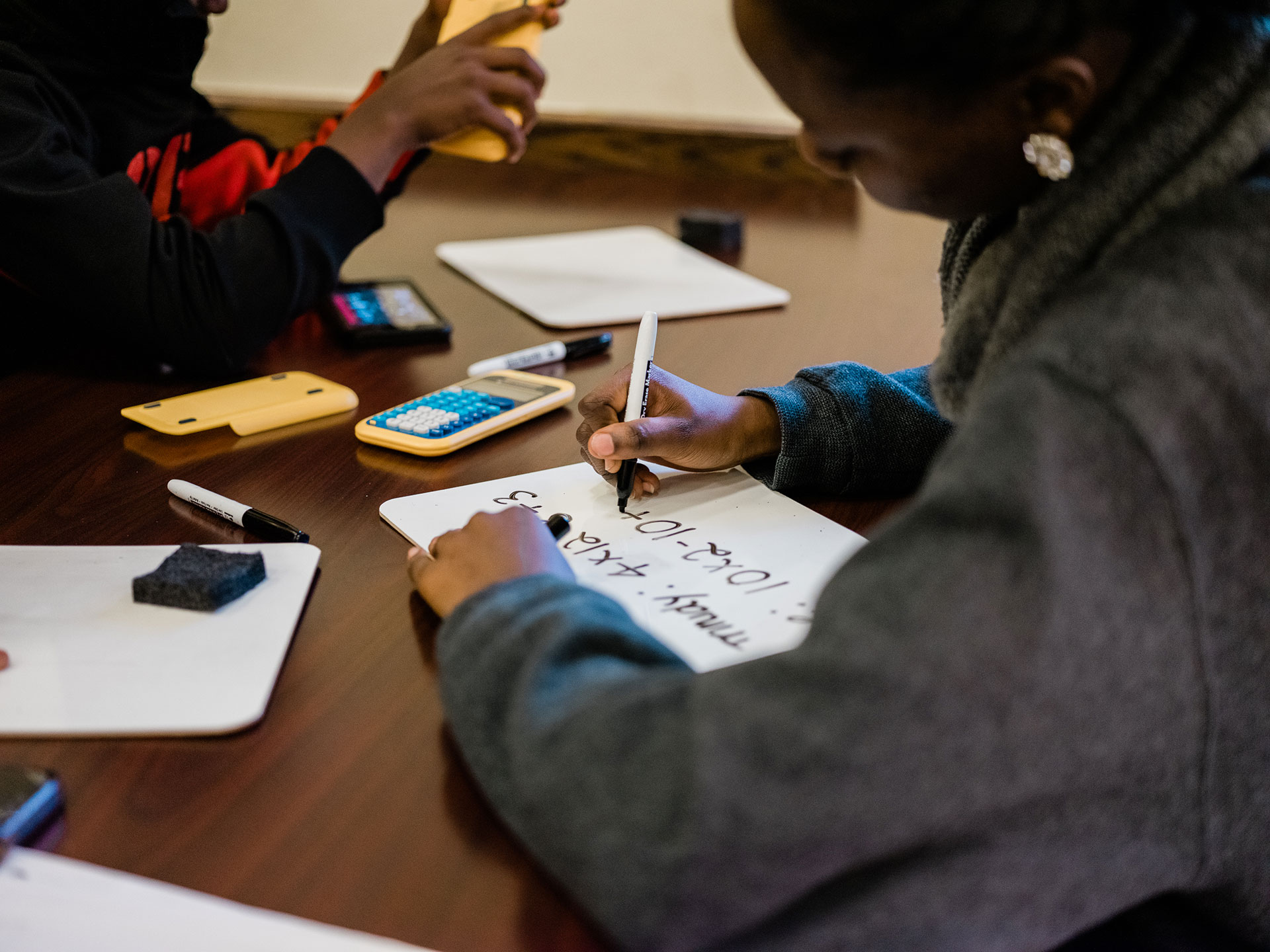
Dan Dzodin, a third-year Heinz Fellow, is the Ready to Learn Site Coordinator at UPrep this year. Today, like every day, he and his fellow mentors are balancing their attention to ensure that each and every student in the room is supported in their personal learning journey.
At one end of the room, students login to laptops to complete math problems in Mathia, a learning app developed by Carnegie Learning. At tables staggered across the room, other students work with mentors, Pitt students recruited and trained.
The program is highly popular for students—on the day of this report 18 of the 20 students enrolled in the program in attendance—and Dzodin says that just about every day, students come up to him during the school day to ask how they can sign up.
Through its mentoring sessions here at UPrep and at Westinghouse Academy 6–12, Ready to Learn is one of four programs participating in a pilot of Personalized Learning Squared (PL²), a project of CUE and the LearnLab at Carnegie Mellon University. PL² strives to address the structural barriers facing students of color and students in poverty by pairing artificial intelligence with personal tutoring to foster a dynamic learning experience tailored to individual students.
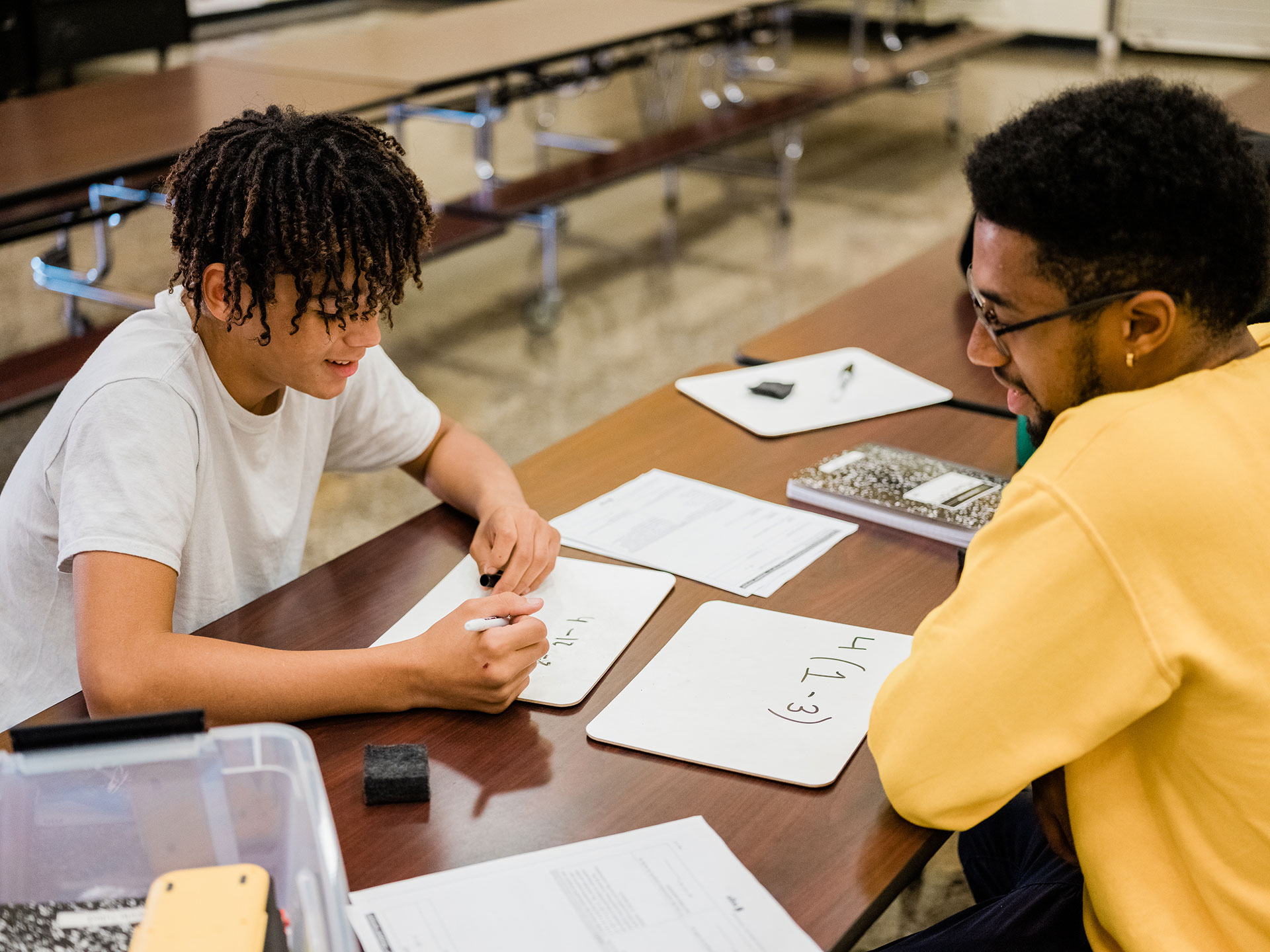
According to education policy scholar Linda Darling-Hammond, “the wealthiest [school] districts spend at least two to three times what the poorest districts can spend per pupil, differentials that translate into dramatically different salaries for educators, as well as different learning conditions for students.”
This disparity in access to quality instruction and learning resources is known as the opportunity gap—the structural and institutional barriers that perpetuate lower educational outcomes for students of color, students from economically disadvantaged backgrounds, students with disabilities, English Language Learners, and other historically marginalized groups.
The opportunity gap manifests in countless ways. One way is through access to personalized instruction like tutoring, which promises greater student achievement, but at a high cost and limited availability that puts it out of reach for most families.
Ready to Learn emphasizes personalized math instruction as an approach to addressing the opportunity gap facing marginalized students. Competence in math is increasingly seen as essential to securing a high-paying career. By using a culturally responsive approach that connects math to the real world and empowers students to approach difficult math problems with confidence, Ready to Learn counters the inequities facing the students attending UPrep and Westinghouse—where the student body is 89% and 95% African American respectively—while also building on the brilliance each student brings with them.
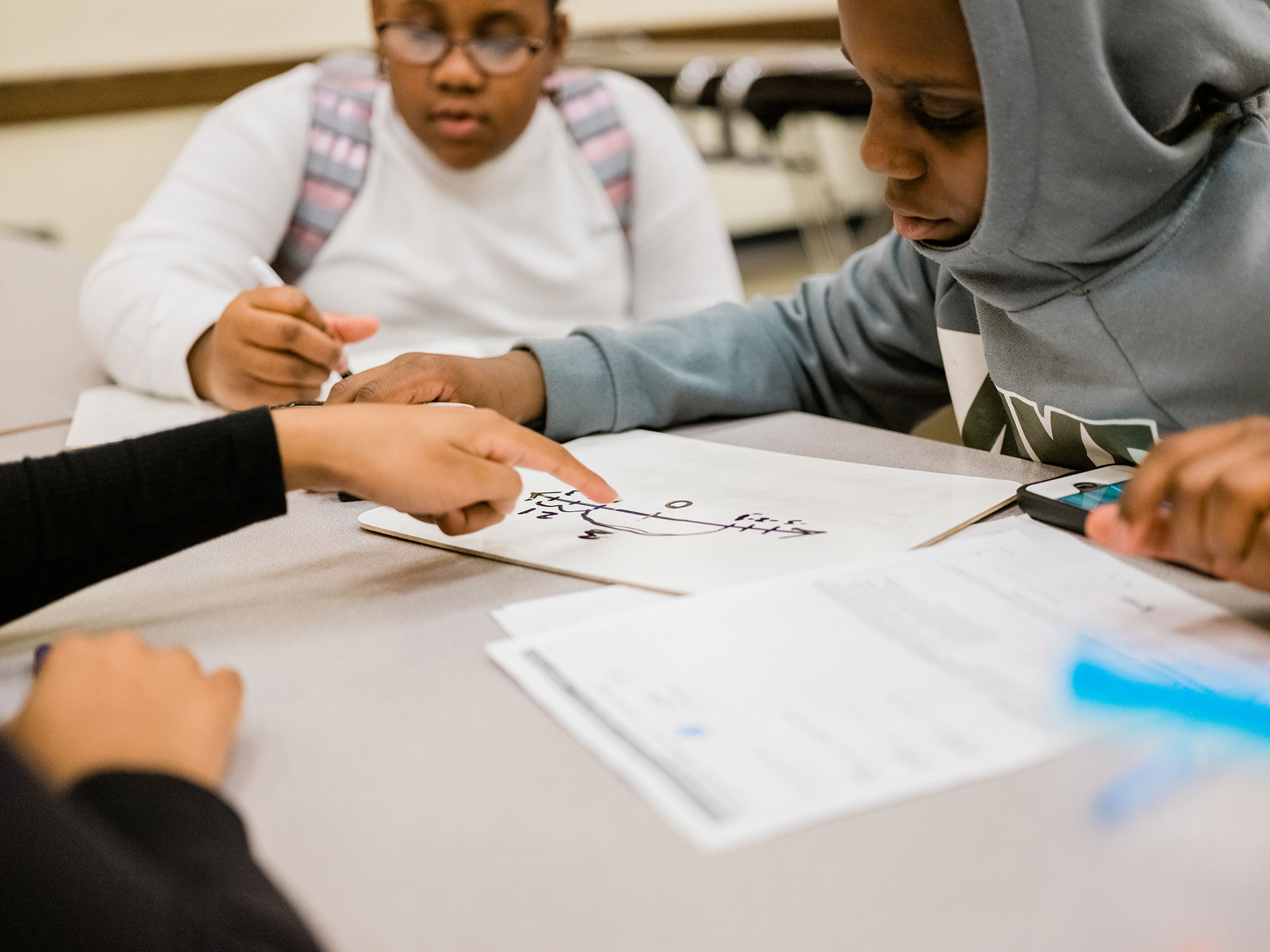
By helping mentors focus their efforts, PL² amplifies Ready to Learn’s power to address the opportunity gap.
PL²’s AI analyzes students’ work in Mathia and generates a report for mentors, who can see how many problems a student got right, how long they took to solve certain types of problems, and how often they used Mathia’s “hint” button to prompt the system into giving them the correct answer.
That information alerts mentors to trends they might otherwise overlook, allowing the five mentors here at UPrep to give meaningful, personalized attention to each student in attendance.
That’s what is happening between Adwoa Imbeah, a senior majoring in psychology and Africana Studies, and her student, as they use a whiteboard to work through a word problem. When Imbeah noticed the student barely progressing through Mathia’s problems despite spending more than half an hour logged in, she took a closer look at PL²’s insights.
“It was the substitution problems that were holding her up,” Imbeah says. She worked one-on-one with the student, practicing substitutions, and since then the student has been progressing steadily.
“If they can’t get past a certain point or they’re slowing down it’s probably because it’s getting harder,” Imbeah says, “and you should go over the concept with them so they know what it is.”
Other mentors have used the PL²app to keep notes on student progress and the dynamics within groups: who works well with whom, which mentees are at similar levels, and who benefits from more one-on-one attention.
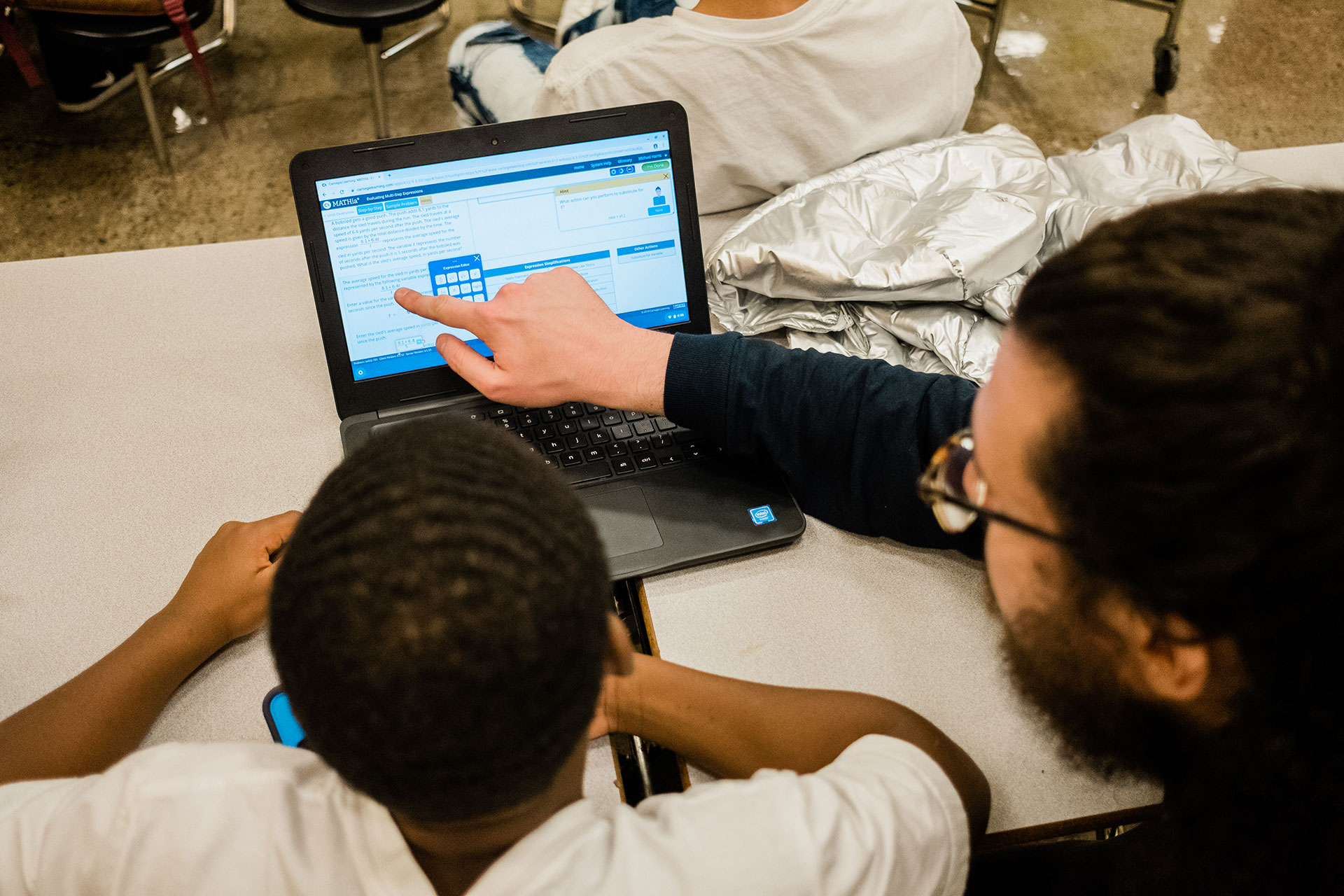
How mentors are using PL² in different learning environments and how it is both working and not working for them, are critical pieces of information for the LearnLab team.
Tailoring the personalized learning software mentors and tutors use to meet the challenges and opportunities unique to each site is critical to the PL² project, says Ken Koedinger, professor of Human Computer Interaction and Psychology at CMU and LearnLab director.
“There is a cascading set of enabling conditions for a student to succeed in math, and there are failure points all along the way.” Koedinger says.
Just as PL² itself helps students avoid those failure points, getting feedback from people on-site like Imbeah and Dzodin is a powerful tool for LearnLab to figure out how best to support the mentors and tutors dedicating themselves to helping students succeed.
On the far side of the room, four students take a break, watching a YouTube video on a cell phone and mimicking the dance moves they see.
“We have to make it a little fun,” says Cassandra Brentley, Ready to Learn’s program manager and a CUE doctoral student. “We realize their inclination is to want to be connected.”
The dance breaks, along with the youth-adult mentoring relationships and socially supportive atmosphere, are all part of Ready to Learn’s remarkable student engagement. Brentley reports UPrep teachers’ enthusiasm at seeing their students voluntarily settle in to work on their math skills for a sustained period. At Westinghouse, where program attendance is still ramping up, student engagement has also been encouraging so far.
Later, after the students have gone, the mentors collect supplies and dispose of empty pizza boxes. Dzodin addresses the group.
“This is an unqualified success even if it’s a little chaotic,” he says. Just about every day, kids come up to him during the school day to ask how they can sign up.
“Kids are enjoying this,” Dzodin says. “They keep wanting this. So I think we’re doing awesome.”
